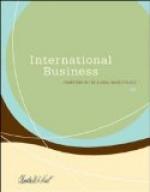|
This section contains 1,248 words (approx. 5 pages at 300 words per page) |

|
Organizations competing on an international basis face choices in terms of resource allocation, the balance of authority between the central office and business units, and the degree to which products and services are customized in order to accommodate tastes and preferences of local markets. When employing a transnational strategy, the goal is to combine elements of global and multidomestic strategies. Each of these will now be briefly discussed.
A global strategy involves a high degree of concentration of resources and capabilities in the central office and centralization of authority in order to exploit potential scale and learning economies. Customization at the local level is thus necessarily low. The multidomestic strategy, on the other hand, represents the opposite view of international strategy. Resources are dispersed throughout the various countries where the firm does business, decision-making authority is pushed down to the local level, and each business unit...
|
This section contains 1,248 words (approx. 5 pages at 300 words per page) |

|


